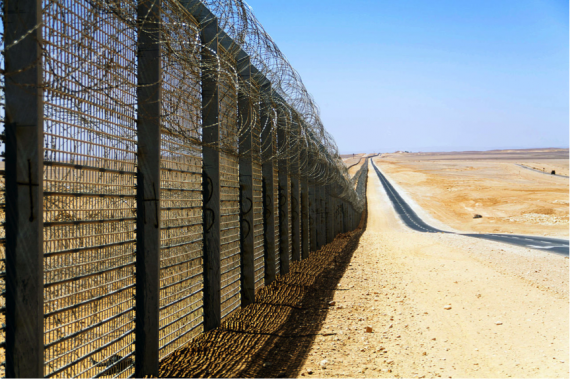
Is our gospel big enough to break down dividing walls between people groups?
[This is part of the series “Multi-Ethnicity in the Missional Church”. Read the other posts here]
By Eric Rafferty
With this series we’ve tried to highlight how multiethnicity can be so much more than another value on the long list of things that we should care about as Christians. Multiethnicity is APE! Multiethnicity is apostolic, rooted in a vision of reaching every people group in our cities or campuses. Multiethnicity is prophetic; it reveals an alternate reality, a living picture of the Kingdom of God. And today we want to highlight that building communities of reconciliation bears witness to the power of the gospel.
Refrigerator box salvation?
Growing up in church we both could have told you the gospel from a young age: “Jesus died for my sins. I used to be separated from God but because of Jesus’ sacrifice I am reconciled to a loving relationship with God.” And that is absolutely true and it is great news! But what does it have to do with anything other than me?
In his forward to Neil Cole’s Church 3.0 Francis Chan tells a story of how he used to take this individual relationship idea too far. He once brought a refrigerator box with the top cut open on stage and preached a sermon from the inside of the box to encourage everyone to focus on just themselves and God. Is that all God is interested in?
I recently met a leader from the International Fellowship of Evangelical students who shared about leading a weekend Bible study in Israel with a group of Palestinian, Jewish, and Arab students. Is refrigerator box salvation good news for students living in a war torn society? Would that gospel offer any power to transform their families and communities?
For Eric, growing up in a segregated city in the Midwest, or for Stacy growing up in the midst of a race war in LA, does the Gospel have anything to say about reconciliation between people groups? Does the good news of Jesus have anything to say about bridging the gap between races or just between individuals and God?
Paul’s gospel of reconciliation
This is one of the big questions that the Apostle Paul wrestled with as he planted multiethnic churches across the Roman Empire. How could Hebrews and Greeks be reconciled to each other and together be reconciled to God?
Look at the gospel that Paul proclaims in Ephesians chapter two:
“13 But now in Christ Jesus you who once were far away have been brought nearby the blood of Christ. 14 For he himself is our peace, who has made the two groups one and has destroyed the barrier, the dividing wall of hostility, 15 by setting aside in his flesh the law with its commands and regulations. His purpose was to create in himself one new humanity out of the two, thus making peace, 16 and in one body to reconcile both of them to God through the cross, by which he put to death their hostility. 17 He came and preached peace to you who were far away and peace to those who were near. 18 For through him we both have access to the Father by one Spirit.”
This is the good news! Jesus died on the cross to destroy the dividing walls of hostility between ethnic groups, to reconcile them together, and to draw them both up into a reconciled relationship with God.
That was revolutionary news when Paul proclaimed it in a divided world 2000 years ago and it is revolutionary news today.
The gospel of reconciliation on campus
We’ve previously posted stories about some of the amazing things God is doing with student planters and Black Campus Ministries at the University of Nebraska at Omaha. Two student leaders have helped launch three missional communities on two different campuses and have helped five students begin relationships with Jesus this year!
These communities have experienced the gospel of reconciliation and walls are breaking down. The walls they put up between themselves and God have crumbled as they’ve experienced his love. And the walls that exist between ethnic groups have crumbled too. This semester we watched one of the most powerful manifestations of the gospel as we sat with an African American and a Sudanese American student. We listened to them share about their experiences going through High School in Omaha and the constant tension between Black and African students. Jesus broke down the wall between them as they confessed sin and forgave one another. As these two students got to know Jesus this year they also got to know each other. And now a reconciled community of African American and Sudanese is thriving on campus and bearing witness to the power of the gospel.
Where do dividing walls of hostility exist in your community?
How do you communicate the gospel of reconciliation? (Seriously, we’d love to learn from you!)
[This is part of the series “Multi-Ethnicity in the Missional Church”. Read the other posts here]

Sign up to receive our blog posts via e-mail and get instant access to our APE Library with videos, seminars, leaders notes, and more.

